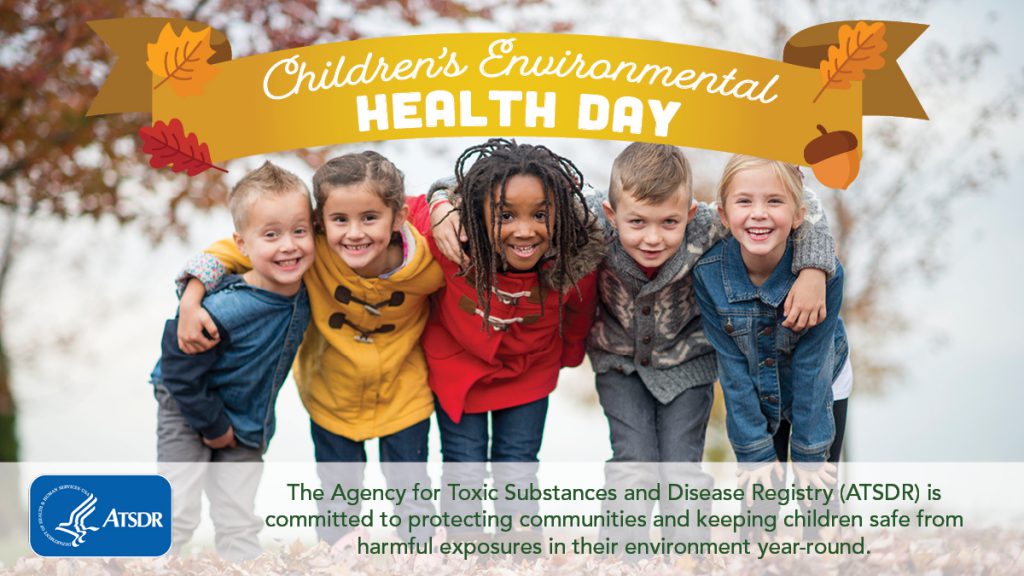Children’s Environmental Health Day – October 8, 2020
Posted on by
ATSDR Protecting Children’s Health – Our Future Generation!
Today, children may face illnesses linked to environmental exposures where they live, learn, and play. For example, children may be exposed to harmful chemicals in the air they breathe, the water they drink, or soil they touch or swallow.
As our scientific understanding of children’s environmental health issues continues to evolve, so do the policies and practices in place to protect children’s health. The Agency for Toxic Substances and Disease Registry (ATSDR) is committed to promoting the healthy development of children through our public health initiatives such as: Choose Safe Places for Early Care and Education, soilSHOP, Brownfields and Land Reuse Sites, Don’t Mess with Mercury.
These initiatives help keep communities safe from harmful exposures and related diseases and provide resources to communities and partners to raise awareness and understanding about the issues facing children to promote a healthier environment.
Did You Know
Brownfields and Land Reuse Sites
- There are over 500,000 brownfields and land reuse sites in the U.S.
- Brownfields and Land Reuse sites are areas that may be contaminated with chemicals from past or current uses.
- ATSDR is transforming communities across the nation by working with cities, towns, and neighborhoods to help redevelop sites that are turned into spaces such as schools, parks, and gardens, protecting residents (especially children) from dangerous substances and improving public health.
Choose Safe Places for Early Care and Education
- About 8.3 million children are in early care and education (ECE) centers in the US, and nearly 1 million of them are in centers that haven’t been adequately assessed for harmful chemicals.
- Even if a center meets current state licensing regulations, it might be located in places where children and staff can come in contact with dangerous chemicals from the environment.
- State and local agencies can use ATSDR planning tools and resources from the Choose Safe Places for Early Care and Education program to help reduce the risk of chemical exposure in early childhood learning centers.
Don’t Mess With Mercury
- Elemental (metallic) mercury is dangerous. Breathing mercury vapors can make people sick.
- ATSDR has responded to hundreds of community mercury spills, many at schools. Metallic mercury spills can be costly, disruptive, and destructive.
- To learn more about mercury, how it can affect your health, and what to do if you find mercury, check out the mercury resources for school staff, students, and/or teachers on the Don’t Mess with Mercury website.
soilSHOP
- A soilSHOP (soil screening, health, outreach and partnership) is a community health educational event where people can learn more about potential lead contamination in their soil and how to prevent or reduce exposures to lead in soil.
- Children under the age of 6 years are most at risk because they spend a lot of time on the ground and tend to put their hands or other objects (which may be contaminated with lead dust) into their mouths.
- Children are also at greater risk because their brains are growing quickly and lead can hurt the brain’s growth, hearing and speech development, overall growth and development, and make it hard to pay attention and learn.
For more information about ATSDR, visit: www.atsdr.cdc.gov
Tweet this: “In honor of Children’s Environmental Health Day! #ATSDR is committed to providing safe places for children to live, learn, and play all year round. Learn what ATSDR is doing to help Protect Children’s Health – Our Future Generation! https://bit.ly/3lq4cqR. #CDCEHblog via @CDCEnvironment. #ATSDR is proud to join others around the world in celebrating Children’s Environmental Health Day!”


Post a Comment